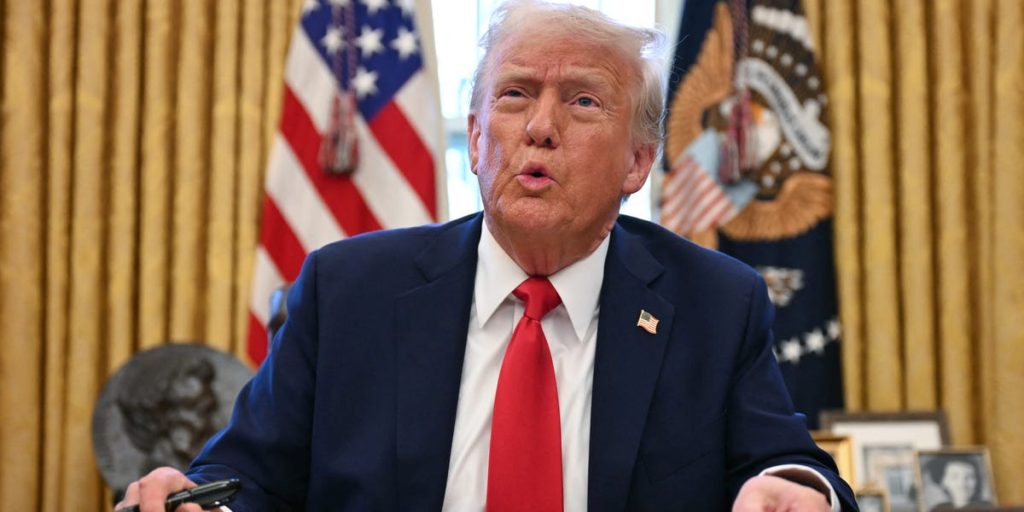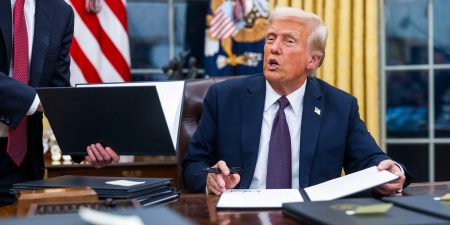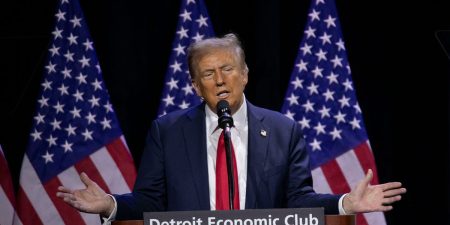A New Era for U.S. Sovereign Wealth: Understanding Trump’s Ambitious Plan
President Donald Trump has recently tasked his Cabinet with exploring the creation of a U.S. sovereign wealth fund, a move that has sparked both curiosity and controversy. Sovereign wealth funds (SWFs) are state-owned investment vehicles that manage a nation’s financial assets, often derived from natural resources like oil or diamonds. While the U.S. currently runs a significant deficit, Trump’s executive order highlights the potential to leverage the country’s vast existing assets, estimated to be worth $5.7 trillion, to create a fund that could diversify investments, secure future prosperity, and even generate returns for citizens. This idea, while ambitious, raises several questions: How would such a fund operate? How would it be funded? And what would it invest in?
Sovereign Wealth Funds 101: A Global Perspective
To understand the potential of a U.S. sovereign wealth fund, it’s helpful to look at how other countries have approached this concept. Two of the largest SWFs in the world—Saudi Arabia’s Public Investment Fund (PIF) and Norway’s Norges Bank Investment Management—offer starkly different models. Saudi Arabia’s PIF is known for its flashy investments in electric car companies, video game makers, and even sports franchises, reflecting the kingdom’s efforts to diversify its economy away from oil. Norway’s fund, on the other hand, takes a more conservative approach, focusing on steady, long-term returns through investments in stocks, bonds, and infrastructure projects. Both funds, however, share a common goal: to invest surplus revenues from natural resources to ensure economic stability and prosperity for future generations.
Trump’s Executive Order: A Call to Action
Trump’s executive order directs the Treasury and Commerce departments to develop a plan for a U.S. sovereign wealth fund within 90 days. While the details are still sparse, the order suggests that the fund would be built using existing federal assets, such as the vast tracts of land the U.S. government owns, rather than relying on new taxes or debt. This approach could address concerns that creating such a fund would exacerbate the national deficit. The fund’s management would likely fall under the purview of high-profile figures, including Treasury Secretary Scott Bessent and Howard Lutnick, Trump’s nominee for commerce secretary, both of whom have strong Wall Street backgrounds.
Addressing Concerns: Can the U.S. Pull This Off?
Critics argue that the U.S., unlike many countries with SWFs, does not have a surplus to invest. Instead, it runs trillion-dollar deficits, which raises questions about how the fund would be funded without increasing debt or taxes. However, proponents point out that the U.S. has significant untapped assets, including its vast natural resources and federal lands, which could be repurposed or managed more effectively. James Broughel, a senior fellow at the Competitive Enterprise Institute, notes that the U.S. could become a better steward of its assets, preserving their value for future generations. For example, the U.S. is already the world’s largest oil producer, and better management of these resources could provide a steady stream of revenue for the fund.
How a U.S. Sovereign Wealth Fund Could Work
The structure and strategy of a U.S. sovereign wealth fund would likely differ from those of other countries. While some funds focus on high-risk, high-reward investments, others prioritize stability and long-term growth. A U.S. fund might adopt a balanced approach, investing in a mix of stocks, bonds, private equity, and infrastructure projects. Given the sheer size of the U.S. economy, the fund could generate significant returns even with modest annual gains. For instance, a 5% return on a $100 billion fund would yield $5 billion in a single year, a sum that could be used to fund government services, infrastructure projects, or even direct payments to citizens.
The Road Ahead: Opportunities and Challenges
While the idea of a U.S. sovereign wealth fund is intriguing, its success will depend on how it is implemented. Key questions include how the fund will be governed, what assets it will manage, and how transparent its operations will be. If done well, such a fund could help the U.S. diversify its economy, reduce reliance on debt, and build a financial safety net for future generations. On the other hand, poor management or political interference could undermine its potential. As the Treasury and Commerce departments begin to flesh out the details, Americans will be watching closely to see whether this ambitious plan can turn into a reality that benefits the nation as a whole.












